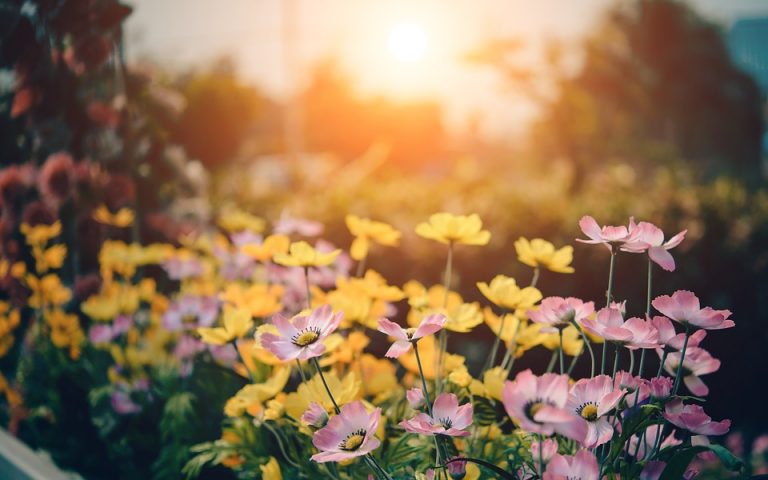Gardeners are all aware of the impact of temperature on soil and growing conditions. You can refer to the agricultural plant hardiness map that helps understand the temperature variations across different countries including the quality of water.
Numerous factors impact the growth of a plant. Learning the different climate types and zones can help you understand them better.
This article highlights the role of climatic zones and their impact on gardening.
What are Climate Zones?
Climate zones help understand the various factors influencing particular geography, like:
- Length of the growing season
- Summer temperatures
- Duration of winter
- Range of temperature fluctuations
- Humidity levels
- Amount of precipitation or rainfall
The plant hardiness zone map helps you understand which plants can survive under what outdoor conditions. If you closely observe, you will find every plant’s hardiness range when you purchase it from a nursery.
Gardeners refer to the above conditions while choosing plants for gardening in a particular climate zone. A crucial aspect to keep in mind is that plants do well when they get a climate similar to their native land.
Various Climate Zones and Their Impact
It is vital to understand the different climate zones before building your garden. There are five key climate zones, and each of them impacts the plants you can grow.
Tropical Climate Zone
The countries lying between the Tropic of Cancer and the Tropic of Capricorn are part of this set. Central America, Mexico, and the top half of South America fall in this zone. In southern Asia, Oman, India, United Arab Emirates, and Saudi Arabia are in this set.
Most of the island nations of Oceania, like the Marshall Islands, Micronesia, Kiribati, and Australia are part of the zone too. You can refer to the weather data of a country in this zone, like Australia, at https://www.tomorrow.io/weather/AU/. You will find it humid and hot with a lot of precipitation and a high average temperature.
Dry Climate Zone
Some countries of Southern Africa, North America, South America, and Asia experience dry climates. You will find that these locations experience very low precipitation and a dry but hot climate.
Temperate Climate Zone
The countries in the subtropical and Polar regions are part of this set. These countries face a low-temperature change between their winter and summer seasons.
Countries of Europe, Uruguay, the Middle East, the United States of America, North Africa, India, Japan, New Zealand, and Canada fall in this bracket. The summers are warm and wet with the rain, while the winters are mild.
Continental Climate Zone
Continental climate dominates most of Europe, including Finland, northern Sweden, northern Ukraine, Russia, and eastern Belarus. These countries experience prolonged and cold winters with a high snow cover. Summers are generally cool or warm.
Polar Climate Zone
The countries near the Arctic region experience a polar climate. Winters are extremely cold, and they lack warm summers. Parts of Canada, the United States, Greenland, Iceland, Norway, Sweden, Finland, and Russia face such a climate.
Now that you know about the climate zones, you will have a better approach to gardening. You will be able to introduce plants in your garden that match your prevailing climatic condition. It will ultimately help get the growing season, rainfall pattern, and humidity’s benefit to have a better yield.
What to Grow?
Plants have evolved to face harsh conditions, like temperature, frost, or humidity. However, it is ideal to nurture them, as per their possible growing season, to get the maximum benefit and make your exteriors look better.
Choosing to have a garden with annual plants that grow, flower, and perish in a single year can help reduce your efforts. The perennials require specific climatic conditions for their growth.
During the Cool Season
The chill tolerance varies from one vegetable to another. Most of the vegetables mentioned below are intolerant to temperatures above 24° C and are best to grow between 16 – 18°C.
- Cold-hardy Vegetables – beetroot, turnip, broad bean, spinach, broccoli, radish, etc.
- Frost intolerant Vegetables – cauliflower, silverbeet, carrot, peas, celeriac, parsley, mustard, etc.
- Frost tolerant Vegetables – leek, asparagus, shallots, chives, onion, garlic, etc.
During the Warm Season
The heat tolerance of warm-season vegetables varies from one plant to another. Most of the vegetables mentioned below are best to grow between 18 – 27°C.
- Medium heat lovers – bean, tomato, capsicum, squash, cucumber, sweet corn, etc.
- Real heat lovers – eggplant, watermelon, okra, rosella, pigeon pea, sweet potato, etc.
As you can see, knowing the climate zone can help you have a better yield from your garden. Keep the above points in mind while shortlisting plants and vegetables for your garden.

